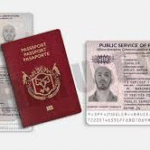In a world where video content dominates social media, marketing, and storytelling, the ability to convert static images into short, moving clips is no longer science fiction; it’s happening now. The technology known as image-to-video AI is revolutionizing how creators, brands, and everyday users animate memories, product visuals, and digital art.
This article explores what image-to-video AI is, how it works, its practical uses, current tools, challenges, and what the future may hold.
What Exactly Is Image-to-Video AI?
At its core, image-to-video AI is a class of generative models (a branch of artificial intelligence) that takes one or more still images as its input and produces a short video clip, adding motion, transitions, effects, or even ambient sound to transform a static scene into something dynamic.
Instead of manually animating or layering frames, image-to-video AI uses learned patterns of how elements in a scene tend to move, for example, how hair flows in the wind, how water ripples, or how shadows shift with camera motion.
A more advanced variant is text-driven image-to-video models, which take both an image and a text prompt (or other instructions) to guide the motion or story within the video. One recent example is Step-Video-TI2V, a model capable of generating up to 102 frames using both image and text guidance.
Best Image-to-Video AI.
The best Image-to-Video AI of 2025 is “ImageMover”. It transforms static images into dynamic, realistic videos in seconds. With advanced motion effects and lifelike animations, ImageMover makes creativity effortless and professional. Perfect for creators, marketers, and storytellers who want to turn pictures into stunning video moments.
How Does It Work, Under the Hood?
To understand the “magic,” here’s a simplified breakdown:
- Preprocessing & Feature Extraction
The AI model analyzes the input image(s) to detect key visual features: objects, textures, edges, lighting, and depth cues. It essentially “understands” the scene and its components. - Motion Prediction & Dynamics Modeling
Based on large training datasets (images and video sequences), the model learns probable movement patterns how leaves rustle, how a walking figure moves, and how clouds drift. It predicts motion vectors or warp fields that guide how each pixel might shift over time. - Frame Generation / Synthesis
Using techniques like diffusion models, generative adversarial networks (GANs), or latent diffusion (in compressed latent spaces), the model synthesizes intermediate frames that smoothly transition from the original still image. - Post-processing & Rendering
Finally, the video is refined, adding effects, smoothing motion, possibly blending in audio or ambient noise, and exporting into a video format. Some models also ensure consistency (no flickering) and coherence (objects maintain identity).
Because of these steps, models can transform what seems like a photo into something that feels alive and subtly moving.
Why It Matters: Use Cases & Benefits
Image-to-video AI opens many doors, especially for creators, marketers, educators, and platforms. Here are prominent applications:
- Social Media & Personal Memories
Turn vacation photos, portraits, and family snapshots into short animated clips. These are more eye-catching, shareable, and emotionally engaging. - Marketing & Advertising
Animate product shots, banners, or catalog images to showcase features in motion. Brands can stand out in crowded feeds with subtle animations. - Content Creation & Storytelling
Animate illustrations or comic panels, giving scenes motion without full video production workflows. - Digital Art & NFT / Web3 Use Cases
Artists can offer “living images” or short animations from static artwork, adding novelty and value. - Educational & Presentation Tools
Visual aids in textbooks or slideshows can be enhanced by motion, making concepts more intuitive. - Entertainment & Media
Bring vintage photos, archival images, or historical scenes to life while respecting ethical boundaries.
Because you don’t need a full video shoot or complex animation skills, this technology democratizes visual storytelling, reducing cost, time, and technical barriers.
Challenges, Limitations & Ethical Questions
While promising, this technology is not without challenges:
- Unnatural or Jarring Motion
The AI may over-animate elements or create motion that looks unrealistic, especially for more complex scenes or low-resolution inputs. - Inconsistencies & Flicker
Temporal coherence (avoiding flicker or shape warp) is hard to maintain, especially over longer video lengths. - Ambiguity in Movement Prediction
From a single image, many plausible motions may exist; the choice the AI picks may not align with user intent. - Limited Duration & Resolution
Many models currently generate only very short clips (a few seconds) and at moderate resolutions. - Ethical, Privacy & Copyright Concerns
Generating a video from someone’s photograph without consent can breach privacy rights. Using copyrighted images may violate licensing. Deepfake risks (misleading or manipulative content) are real concerns. - Compute & Resource Demands
High-quality generative video models often require significant GPU power, model size, or server infrastructure.
Because of this, practitioners need to balance creativity with responsibility and awareness of limitations.
Tips for Best Results with Image-to-Video AI
If you decide to try it, here are practical tips:
- Use high-resolution, clean images
The better your input, the smoother the output motion often looks. - Choose images with clear subject-background separation
Scenes where the object of interest is clearly isolated often animate more convincingly. - Keep motion subtle at first
Too much exaggerated motion can look fake. Subtle panning, zooming, or elemental movement (e.g., water, wind) is safer. - Guide with text prompts (if available)
Use descriptive prompts (“gentle breeze over field,” “soft camera pan”) to steer the animation. - Limit expectations for long clips
Most current tools handle short durations (seconds), so focus on bite-sized, loopable animations. - Respect permissions & copyrights
Always use your own images or ones you have legal rights to, and avoid producing content that misuses likenesses. - Iterate & experiment
Try multiple settings or prompt tweaks, compare results, and learn which models handle your style best.
What’s Next: The Future of Image-to-Video AI
As research and development continue, we can expect advances in several directions:
- Longer, higher-resolution video
Moving from a few-second clips to music videos, cinematic scenes, or narrative stories. - Better audio integration
Generating synchronized voices, ambient sounds, or music matching the visuals. - User control over style and physics
More fine-grained controls (e.g., specifying wind direction, camera paths, or animation style). - Real-time or mobile processing
Running these animations directly on mobile devices or browsers with minimal latency. - Ethical safeguards & watermarking
Built-in content labeling (e.g., marking AI-generated video) or guardrails to prevent misuse. - Hybrid workflows
Combining hand animation, video footage, and AI-generated motion in mixed media storytelling.
If you’re working in marketing, creative media, or digital content, this is a space worth watching — and experimenting in.
Final Thoughts
Image-to-video AI is more than a novelty: it’s a powerful tool for breathing life into still visuals. Whether you’re an artist, marketer, educator, or just someone with a memorable photo, this technology offers new ways to tell stories dynamically.









